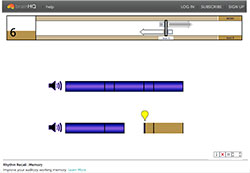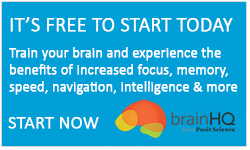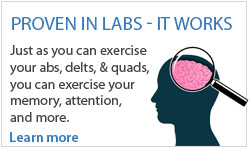![]() We often think of musicians as particularly intelligent. And in fact, there is a lot of evidence that playing music helps the brain be in top form. Studies show that musical training may improve language abilities, enhance memory and processing speed, and even help people maintain cognitive function decades after they stop playing. Certain therapies for Parkinson’s, aphasia, and other conditions are also based on music.
We often think of musicians as particularly intelligent. And in fact, there is a lot of evidence that playing music helps the brain be in top form. Studies show that musical training may improve language abilities, enhance memory and processing speed, and even help people maintain cognitive function decades after they stop playing. Certain therapies for Parkinson’s, aphasia, and other conditions are also based on music.
While there are many aspects of music that are likely good for the brain, two stand out: the demands music makes on working memory and sequencing skills. Rhythm Recall is designed to distill these core musical components to give your brain targeted practice with them.
In the exercise, you hear a brief melody. You also see a representation of the timing of the notes. Then you are challenged to repeat the timing sequence by pressing your keyboard buttons. (Although you hear a melody it isn’t a factor in the task; it’s the rhythm of the notes you are asked to repeat.) Responding correctly requires that your brain translate what you hear and see into a clear mental model, then in turn translate that into precise action.

Coordination between auditory processing, visual processing, and motor action—as is exercised in Rhythm Recall—is called “multimodal integration,” and it’s another important facet of musical training. Multiple brain centers have to work together with extraordinary accuracy to be successful. That’s true in many of the things we do in life. Just think about having a conversation with someone: we have to listen to what they say, watch their face and body for visual cues about how they feel, and react by following their directions, answering a question, or however else is appropriate.
As you move through Rhythm Recall, it changes in these ways:
- As the exercise continues, the visual information gradually decreases, until you are relying almost entirely on the auditory information to drive your motor response.
- The speed of the song varies, going from a moderate pace to a slow pace and then to a quick pace.
- The exercise adapts to your performance by changing the length of the musical sequence you have to repeat. If you’re doing well, it gets longer!
Try Rhythm Recall to get some of the benefits of musical training without ever picking up an instrument.






 English
English
 Français
Français


